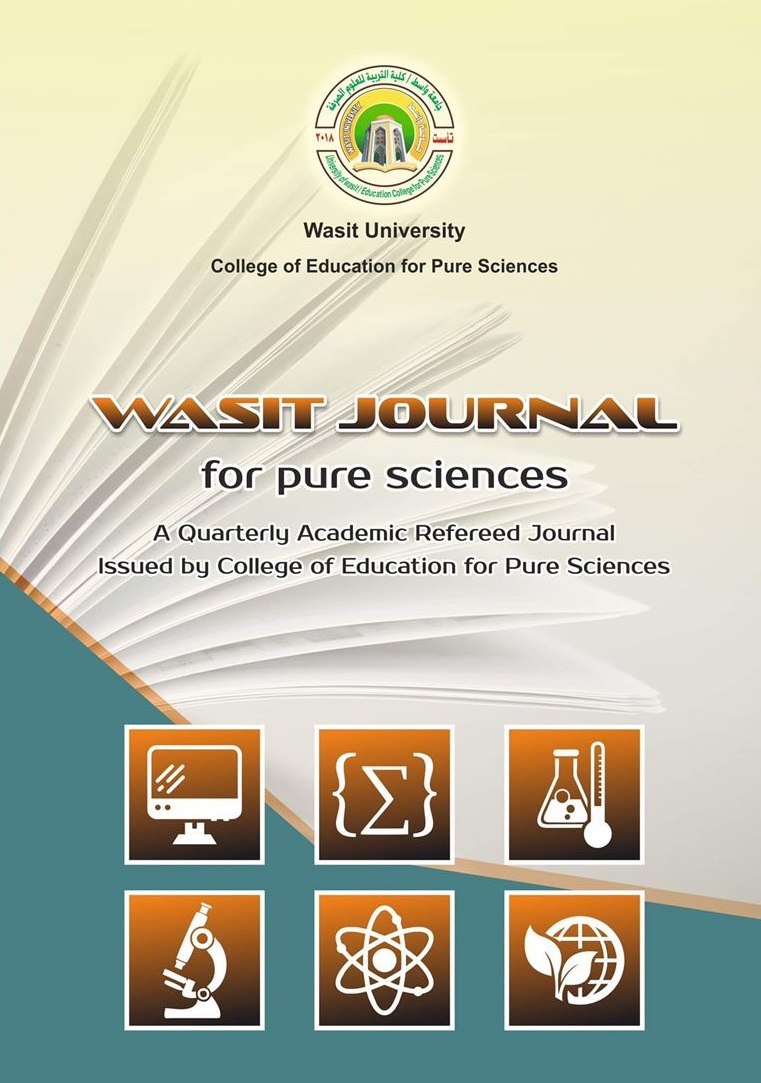Characterization of Group of Invertible Elements of Six Index Zero Completely Primary Finite Rings of Characteristic p
DOI:
https://doi.org/10.31185/wjps.903Keywords:
Completely Primary Finite Rings, Group of Invertible Elements, Six Index ZeroAbstract
The study of finite extension of Galois rings in the recent past have given rise to commutative completely primary finite rings that have attracted much attention as they have yielded important results towards classification of finite rings into well-known structures. In this paper, we give a construction of a class of completely primary finite ringof characteristicwhose subsets of zero divisors satisfy the condition . The ring is constructed over its subring as an idealization of the - modules. A thorough determination and classification of the structure of the group of invertible elements using fundamental theorem of finitely generated abelian groups is given.
References
[1] Y. Alkhamees, “Finite rings in which the multiplication of any two zero divisors is zero,” Archive Der
Mathematik, vol. 37, pp. 144-149, 1981. https://doi.org/10.1007/BF01234337
[2] C. J. Chikunji, “On a class of finite rings,” Communications in Algebra, vol. 10, pp. 5049-5081, 1999. https://doi.org/10.1080/00927879908826747
[3] C. J. Chikunji, “Unit groups of cube radical zero commutative completely primary finite rings,” International
Journal of Mathematics and Mathematical Sciences, vol. 4, pp. 579-592, 2005.
https://doi.org/10.1155/IJMMS.2005.579
[4] C. J. Chikunji, “On unit groups of completely primary finite rings,” Mathematical Journal of Okayama
University, vol. 50, pp. 149-160, 2008. https://moodle.buan.ac.bw:80/handle/123456789/290
[5] C. J. Chikunji, “Unit groups of finite rings with products of zero divisors in their coefficient subrings,”
Publications De L’institut Mathematique, vol. 109, pp. 215-220, 2014. https://doi.org/10.2298/PMI1409215C
[6] B. Corbas, “Rings with few zero divisors,” Mathematische Annalen, vol. 181, pp. 1-7, 1969.
https://doi.org/10.1007/BF01351174
[7] O. M. Oduor, “Automorphisms of a certain class of completely primary finite rings,” International Journal of
Pure and Applied Mathematics, vol. 74, no. 4, pp. 465-482, 2012.
[8] O. M. Oduor and M. O. Onyango, “Unit groups of some classes of power four radical zero commutative
completely primary finite rings,” International Journal of Algebra, vol. 8, pp. 357-363, 2014.
https://doi.org/10.12988/ija.2014.4431
[9] R. Raghavendran, “Finite associative rings,” Compositio Mathematica, vol. 21, pp. 195-469, 1969.
http://www.numdam.org/item/cm-1969-21-2-195-01
[10] H. S. Were, M. O. Oduor, and M. N. Gichuki, “Unit groups of classes of five radical zero commutative
completely primary finite rings,” Journal of Advances in Mathematics and Computer Science, vol. 36, no. 8,
pp. 137-154, 2021. Doi:10.9734/JAMCS/2021/v36i830396
[11] H. S. Were, M. O. Oduor, and M. N. Gichuki, “Classification of Units of five radical zero commutative
completely primary finite rings with variant orders of second Galois ring module generators,” Asian Research
Journal of Mathematics, vol. 18, no. 6, pp. 70-78, 2022. Doi:10.9734/ARJOM/2022/v18i630385
[12] H. S. Were and M. O. Oduor, “Classification of unit groups of five radical zero completely primary finite rings
whose first and second Galois ring module generators are of order ,” Journal of Mathematics,
vol. 2022, pp. 1-11, 2022. https://doi.org/10.1155/2022/7867431
[13] B. R. Wirt, “Finite associative rings,” Finite non - commutative local rings [Doctoral Thesis, University of
Oklahoma], United States of America. https://hdl.handle.net/11244/3379.
[14] R. S. Wilson, “On the structures of finite rings,” Compositio Mathematica, vol. 26, pp. 79-93, 1973.
Downloads
Published
Issue
Section
License
Copyright (c) 2025 Hezron Were, Mr. Nicholas Waweru, Dr. Edward Njuguna, Dr. John Matuya

This work is licensed under a Creative Commons Attribution 4.0 International License.









